Disclosure: Some of the links on this site are affiliate links. This means that if you click on them and make a purchase, I may earn a small commission at no extra cost to you. Please know that I only recommend products and services I trust and use myself.
If you’re just getting started with machine embroidery, it’s important to choose the right fabrics. Not all fabrics are created equal – some will hold up well to the embroidering process, while others will not. In this article, I’ll discuss the best fabrics for machine embroidery and why they make good choices for beginners. I’ll also explain what fabrics you may want to avoid and why – at least until you get a bit more experience.
Products mentioned in this post
- Heavy cotton duck cloth
- Linen
- Denim
- Felt
- Fleece
- Terry cloth
- Velvet
- Burlap
- Variety pack of faux leather sheets
- Satin
- Silk
Why some fabrics are easier to machine embroidery than others
If you are new to machine embroidery, you may wonder why some fabrics may be easier than others to work with. The answer has to do with the fabric’s weight, weave, and stretch.
Embroidery works best on fabrics that are not too heavy or light.
Very heavy fabrics, like a dense canvas or leather, can be difficult to embroider because the needles have a hard time piercing through the fabric.
On the other hand, very light fabrics, like sheer organza, can be challenging because they tend to tear when you pierce them repeatedly with an embroidery needle.
Machine embroidery is also easier on materials that don’t stretch a lot. If a fabric is too stretchy, it can distort the shape of your design as you stitch it. You can also break the stitches when you have embroidery on a stretch fabric. This is especially true for fabrics with a lot of spandex or Lycra.
Woven fabrics tend to be better for machine embroidery than knits because they don’t have as much give.
The best fabrics for machine embroidery are usually medium-weight fabrics with a tight weave. These fabrics are easy to pierce with an embroidery needle and they hold up well to the repeated stitching.
The best fabrics for machine embroidery
Now that you know what to look for in a fabric, here are a few of the best fabrics for machine embroidery.
Woven Cotton
A woven cotton is a popular choice for machine embroidery because it is affordable, durable, and easy to work with. It doesn’t stretch much and the heavier weights hold up well to embroidery.
Cotton does tend to shrink when you wash it, so be sure to pre-wash your fabric before you start embroidering.
I would avoid very thin cottons (like a light broadcloth) when you are just starting out as it might bunch and tear. Save your thin cotton broadcloth for appliqué pieces. If you really want to add embroidery to a thin cotton, try stabilizing it with a piece of interfacing before putting it on your embroidery hoop.
I personally like embroidering on heavy cotton duck cloth. It’s stiff and durable and handles embroidery like a champ!
Linen
Linen is another popular choice for machine embroidery. It has a similar weight and feel to cotton, but it tends to be a bit more expensive. Like a woven cotton, linen doesn’t stretch much. It is also very durable and easy to work with.
I like linen because it has a beautiful drape and a natural weathered look. Plus, embroidery on linen is a natural fit. It can have a retro bohemian look.
Linen can get quite wrinkly though. So if you plan on washing your final project quite a bit, be prepared to do some ironing.
Denim
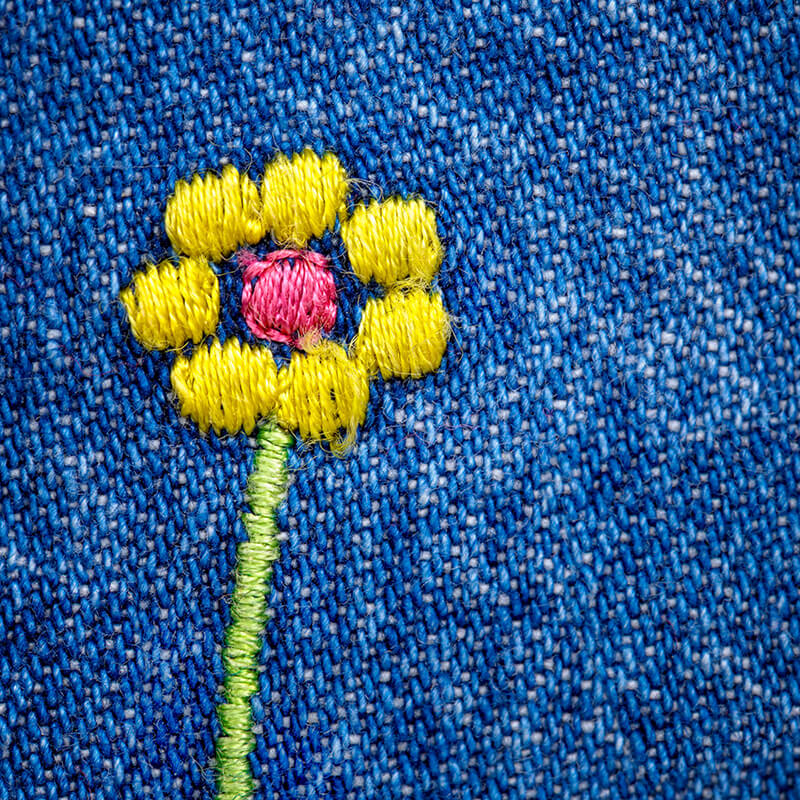
Denim is a great choice for machine embroidery. It is very durable and can take a lot of abuse. Denim also doesn’t stretch much, so your design won’t distort as you stitch it.
One thing to keep in mind with denim is that the thicker the fabric, the more difficult it will be to pierce with your needle. So if you are working with a very heavy denim, you may want to use a thicker needle.
Like linen, embroidery on denim can have a cool retro look. I’m a real sucker for embroidered denim jeans.
Felt
Felt is a great choice for machine embroidery. In fact, I like embroidering on felt so much that I use it for all my test stitching of my embroidery designs!
Felt doesn’t fray, so you don’t have to worry about finishing the raw edges of your projects made of felt. For this reason, felt makes a great material for many in-the-hoop projects.
Another advantage of felt is that it doesn’t stretch, so your design will retain its shape as you stitch it.
One thing to keep in mind with very dense felt is that it can be difficult to pierce with a needle. So, embroidering on it may require a thicker needle.
Felt is available in different quality levels. The really cheap felt looks, well… a bit cheap. So if you are using the felt for home decor projects or even for small, in-the-hoop items, I would spring for the higher end variety. It just looks so much nicer.
Fleece
Fleece is a great choice for machine embroidery, especially if you are working on a project that will be washed frequently.
This marvelous modern fabric is great for outerwear and cozy loungewear. It also doesn’t fray and it holds up well to repeated washings. It also doesn’t stretch (much), so your design will retain its shape as you stitch it.
Now that fleece has become such a common and beloved fabric, you can find it in just about any color or pattern. The huge selection available ensures that you can find just about any color or shade to enhance your embroidery project.
Learn how to machine embroider on fleece.
Terry cloth or toweling
Terry cloth (the material that towels are made of) is a great choice for machine embroidery. It is a very durable material and holds up well to embroidery. Toweling also doesn’t stretch (much), so your design will retain its shape as you stitch it.
One thing to keep in mind with toweling is that the fabric can be quite bulky. So if you are working with a very thick towel, you will definitely want to float the project on the hooped stabilizer as opposed to hooping it.
Trying to hoop a towel was a dumb mistake I made the first time I tried embroidering on towels.
In addition, if you are embroidering on towels with any nap, be sure to use a water soluble topper. Or consider incorporating a knock down stitch area into your design. This will help prevent the design from sinking into the fabric.
Velvet
Velvet is a great choice for machine embroidery. It is very luxurious and has a beautiful drape.
You can buy velvet in with some spandex in it which makes it stretchy. Of course, the stretchier version is going to be more challenging to work with than the non-stretchy variety.
If you are working with a very dense velvet, consider changing your needle to one with a bit more beef to help you pierce through the fabric.
Most importantly, be sure to use a water soluble topper when embroidering on velvet. This will help prevent the design from sinking into the fabric.
Burlap
Burlap is popular material for machine embroidery, and rightly so. It is very durable and has a beautiful rustic look. Burlap also doesn’t stretch, so your design will retain its shape as you stitch it.
The idea of embroidering on burlap might seem a bit scary – especially on a very open weave burlap. If the weave has a lot of large voids – your stitching will not have enough to “bit into,” so you will need to provide extra stabilization.
But you can make a lot of cool projects with burlap, from garden flags to table runners to custom, rustic wine bags.
So, if you are new to machine embroidery, I would suggest starting with a burlap with a tighter weave and less texture. As this type of burlap will stand up best to machine embroidery without a lot of extra stabilization.
Faux leather or marine vinyl
Faux leather may seem like an odd material to mention here, but faux leather and vinyl are frequently used for in-the-hoop projects. It comes in bright colors and it’s thin enough for even an home embroidery machine to pierce through.
Get yourself a variety pack of faux leather sheets and whip up of tons of cute little in-the-hoop items. There are a ton of in-the-hoop objects you can make – even if you are a beginner.
What fabrics are more difficult to machine embroider?
Satin and silk
Satins and silks have a luxe look that can really make your machine embroidery pop. They come in a variety of weights and colors, so you can usually find the perfect one for your project.
One thing to keep in mind with these materials is that they can be slippery and hard to control. It helps to stick the silk or satin onto to the stabilizer to keep the fabric from sliding around on the stabilizer.
If you decide to try embroidering on satin (or silk), I would recommend avoiding very thin silks (like chiffon) as they can be challenging to work with. Stick with a medium to heavy weight silk for best results.
Sweater material
Sweaters can be stretchy and difficult to control. Some sweaters have very open weaves so the stitches can literally just fall through the fabric. When this
Use a water soluble topper when embroidering on sweaters. This will help prevent the design from sinking into the fabric.
Also – stick with smaller designs in areas of the sweater that won’t stretch a lot during wear. You don’t want the embroidery stitches to pop when you put on the sweater.
Check out the sweater I embroidered with bumble bees. It turned out so cute… my teenage daughter has claimed it as her own.
Lycra and other spandex-y materials
Lycra and other spandex-y materials can be difficult to work with because they are so stretchy.
Embroidering on a lycra scared the bejesus out of me until I decided to add some embroidery to a swimsuit. I found that if you use a permanent poly mesh stabilzer and stick with smaller designs that are not in a location designed to stretch a lot – the embroidery can turn out great.
But would I recommend embroidering on lycra or other spandex-y materials for a beginner? Probably not.
Cotton stretch knits
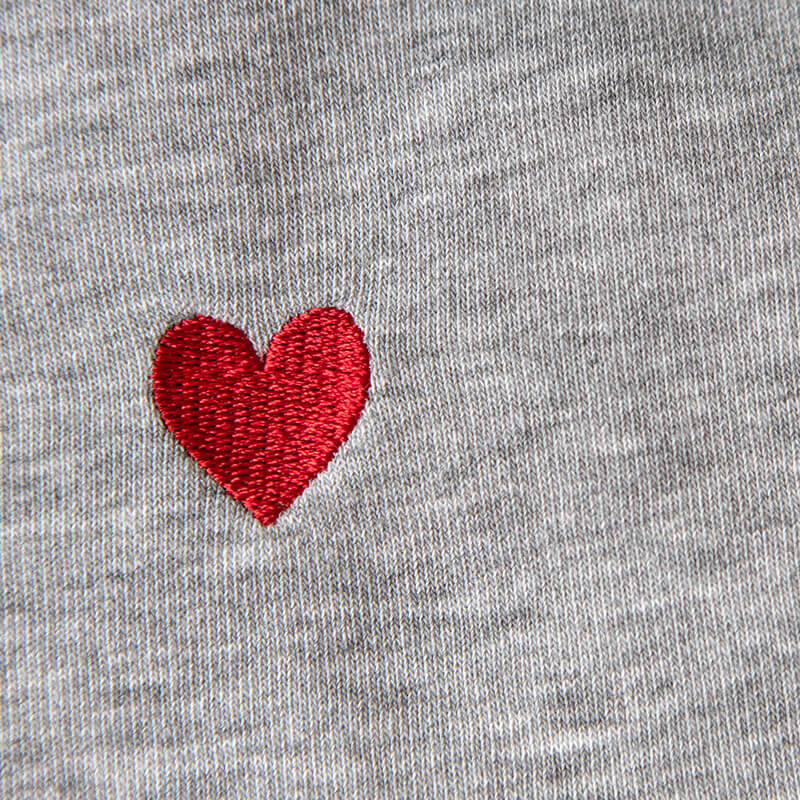
Cotton stretch knits – as in the material used in t-shirts – can be a bit tricky to machine embroider. While they are not slippery like lycra and other spandex-y materials, you still have to deal with the stretch factor. The challenge in embroidering on t-shirt fabric is keeping it from stretching while you are embroidering on them.
Leather
I hate to put leather on the “difficult’ list, because it really depends on the weight of the leather as to how easy/hard it is to work with. Most multi-needle machines can embroider on leather like a boss. But, if you are new to machine embroidery – I would not put embroidering on leather first on my project list.
So what are the best fabrics for machine embroidery?
As you can see, there are a variety of fabrics that work well with machine embroidery, and are easy for a beginner to master.
Some fabrics, like toweling and felt and fleece, don’t stretch much and are easy to work with. Woven cottons and linens are also great choices for machine embroidery, especially ones that have a bit of weight.
Other fabrics, like satin and silk, can be more challenging to control but offer a luxurious look. Sweater material and lycra can be difficult to work with because they are so stretchy. I would recommend avoiding these fabrics if you are just starting out with machine embroidery. But don’t be afraid to take them on once you gain more experience.
Want to remember this? Save “The best fabric for machine embroidery” on your favorite Pinterest board
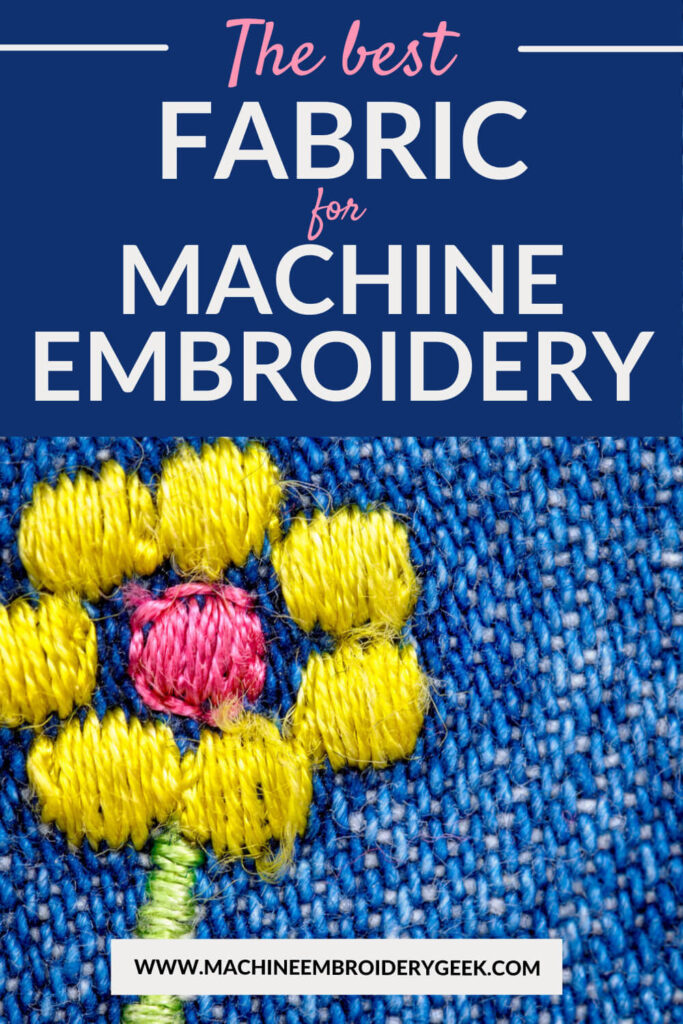
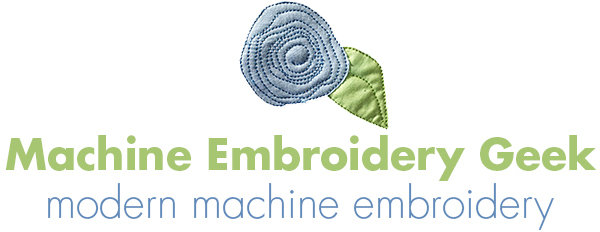
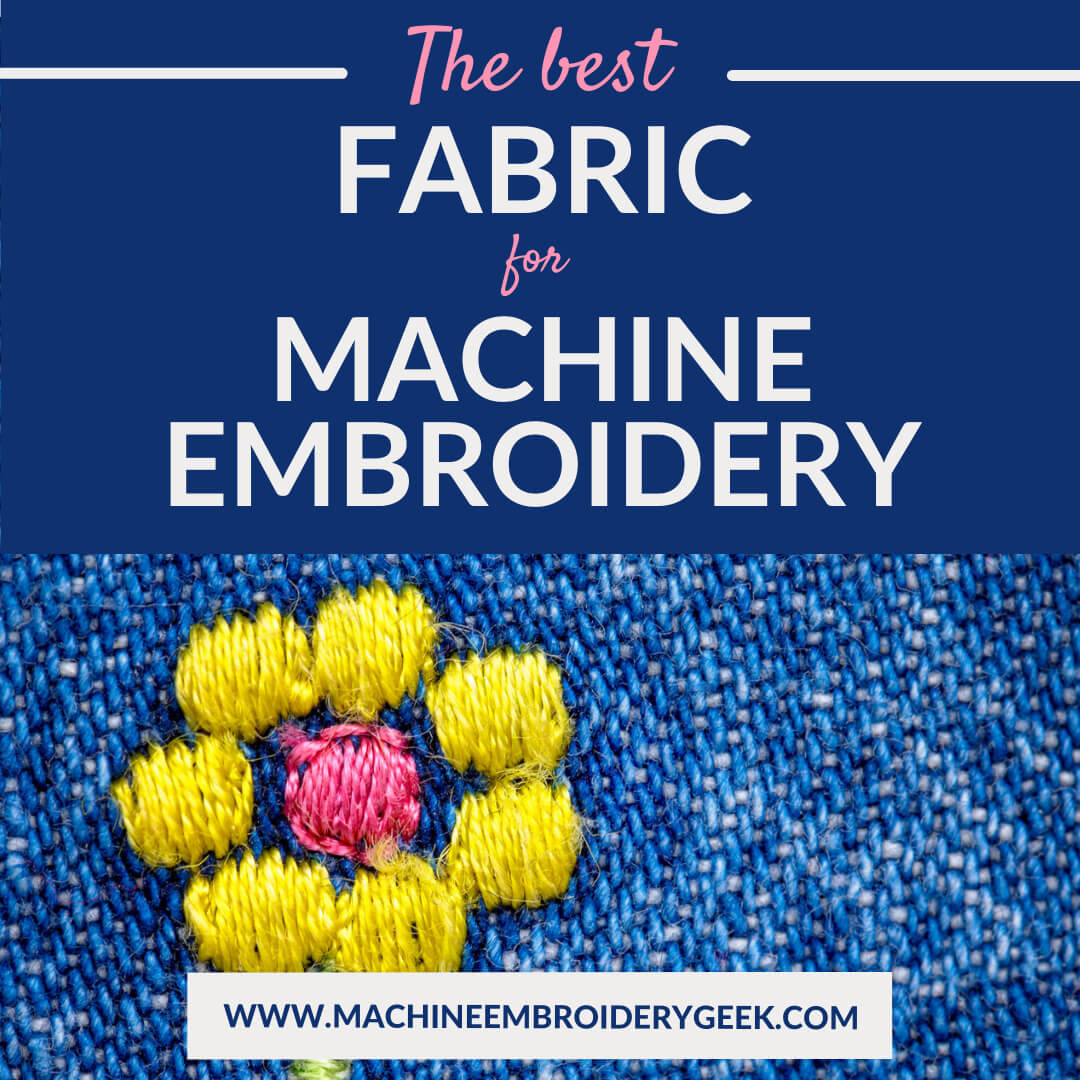
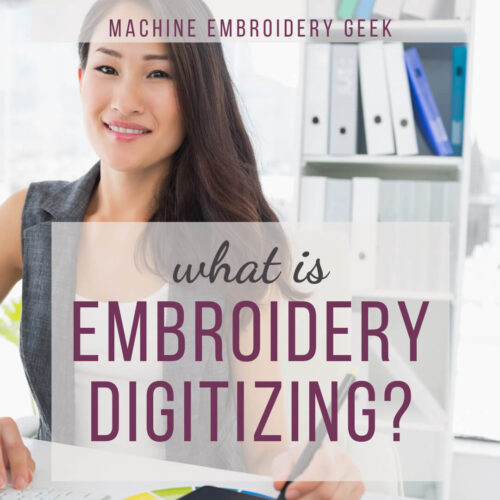
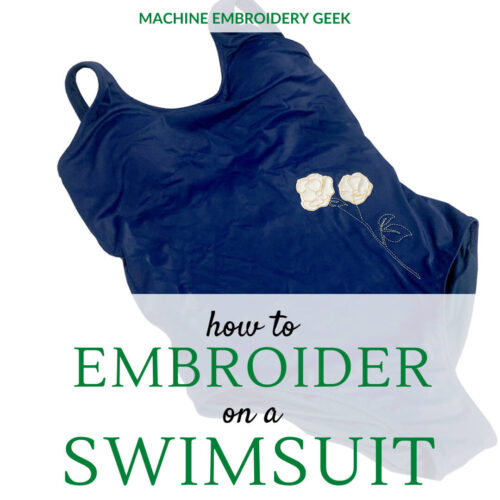
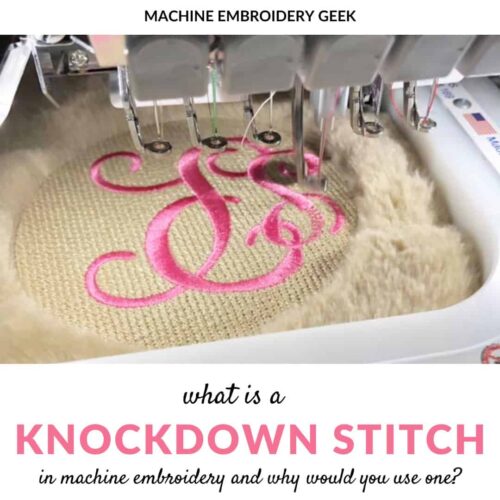
Thank you Julie for a very well written explanation on embroidery.